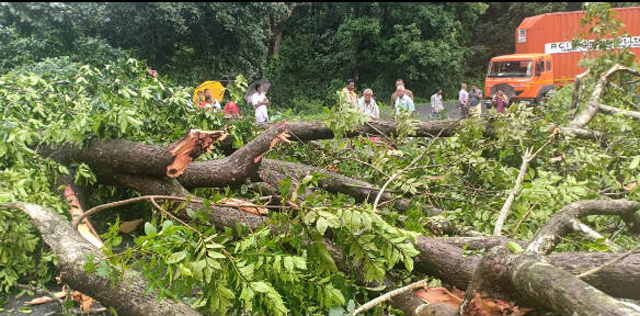Kasaragod, Aug 14: With several parts of Kerala receiving downpour since Tuesday night, many low lying areas have been waterlogged, even as the toll in the rain-battered state has gone up to 95 so far.
A red alert has been sounded for three north Kerala districts of Malappuram, Kannur and Kozhikode, which bore the brunt of the flood fury and landslides last week. In Kasaragod district schools and colleges were shut today.
Pathanamthitta, a central Kerala district which has been receiving very heavy rains since last night is put on high vigil, authorities said Wednesday.
Met authorities forecast heavy to very heavy downfalls at isolated places in Kerala.
As squally weather is likely to prevail over the state, fishermen have been advised not to put out to sea, they said.
In nearby Vizhinjam, a fisherman was drowned and three others were rescued when their fishing craft capsized.
Taking into account the heavy rain forecast, educational institutions in 11 districts have declared holiday on Wednesday.
Meanwhile, Chief Minister Pinarayi Vijayan told reporters after a cabinet meeting that the government was trying to provide all possible help to those affected.
Announcing the financial assistance, Vijayan said as per the state disaster response fund (SDRF) criteria, Rs 10,000 would be given as immediate assistance to the calamity-hit families.
Those who have lost their homes and land would be given Rs 10 lakh, while those whose houses had been destroyed or damaged would get Rs 4 lakh, he added.
As per the figures released by the government this morning, a total of 95 people had lost their lives across the state in the floods and landslides, triggered by the second spell of monsoon since August 8.
Of the 95 deaths reported, 35 were from Malappuram and 12 from Wayanad, where massive landslides had battered high range villages of Kavalappara and Puthumala.
Over 1.89 lakh people, who were displaced by the floods and landslides have taken refuge in 1,118 camps, the figures said adding 1,057 houses had been completely damaged and 11,159 partially destroyed in the deluge across the state.
Despite inclement weather, search operations are still continuing at Kavalappara, where a series of landslides had wiped out an entire village, to trace those who were suspected to have gone missing.
The search was halted for some time this morning as it started raining, authorities said.
Thirteen earth-movers and 500 odd rescue personnel were engaged in search operations at Puthumala in Wayanad, where another landslide had caused havoc, special officer, U V Jose, said.
Mud and boulders from the hill had washed out an entire settlement in the valley below covering it with 15 feet mud and slush.
Sniffer dogs have been pressed into service and Geographic Information System (GIS) team is expected to reach the area, Jose said.
Chief Minister Vijayan and Congress leader and MP Rahul Gandhi had toured the worst affected districts of Malappuram and Wayanad.






Comments
Add new comment